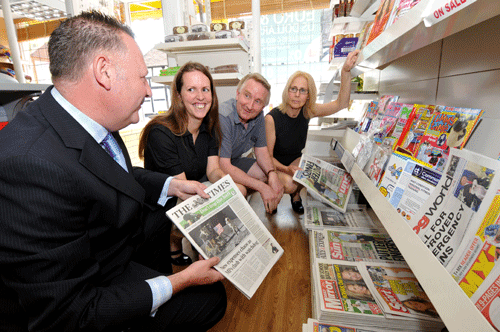 While the Grocer indulged in its usual agenda of knocking CTNs through the medium of Jerry Marwood, boss of Spar, two weeks ago, his rather more insightful interview in the same issue provides two thoughts for local retailers.
While the Grocer indulged in its usual agenda of knocking CTNs through the medium of Jerry Marwood, boss of Spar, two weeks ago, his rather more insightful interview in the same issue provides two thoughts for local retailers.
The first is that the “one-trick pony” is dead in the retail water, by which Mr Marwood means that retailers who buy an off-licence or a newsagent cannot expect to make a living on its core product range.
This is not news. It was true that until the mid 1990s you could make a very good living on just selling confectionery, tobacco, and news (CTN) or beers, wines, and spirits (BWS). It is also not news because both shop formats are in decline. Combined they account for fewer than 7.8 per cent of outlets. C-stores account for 44 per cent. It is also not news because the stores that remain are increasingly in locations where the business model makes sense – by travel points for example.
However, the CTN owners and off-licence operators of the 1990s have not gone away and the really strong point that Mr Marwood is making is that there is no magic format that will guarantee you sales success. What you have to do is to identify the shopper missions that will work in your store. Mr Marwood is a big fan of stocking products for “tonight’s tea” – an area where Tesco Express and the multiple c-stores have an edge.
The second point he makes is about the relative success of Spar stores, with average weekly sales of £19,714 a week through its estate against £12,120 for Premier shops and £13,165 for Londis. If you assume that the average store size for a Spar is 1500 sq ft and for a Premier 1000 sq ft and for a Londis 1200 sq ft, then you get sales densities of £13.14, £12.12 and £10.97 a square foot respectively.
While these all compare well with Tesco’s One-Stop chain, at around £12.50; they are well short of the sales densities achieved by Tesco Express at £25. Sales densities are only part of the picture. As you sell more fresh and chilled products, your overheads and your waste costs will rise, reducing the overall margin.
Spar’s £2.6bn worth of sales, growing strongly year on year according to Mr Marwood, should provide local retailers with optimism that there is plenty of demand from shoppers for local independent outlets. However, you do not have to feel pressured to join a symbol group. Work out your own weekly sales figures and divide these by your selling areas and see what your sales density looks like. If you are going to add new products, use this tool to work out what return you will expect.
Mr Marwood is correct to say that standards need to rise if you want to win more shoppers but there is more than one way to achieve success.



Comments
This article doesn't have any comments yet, be the first!